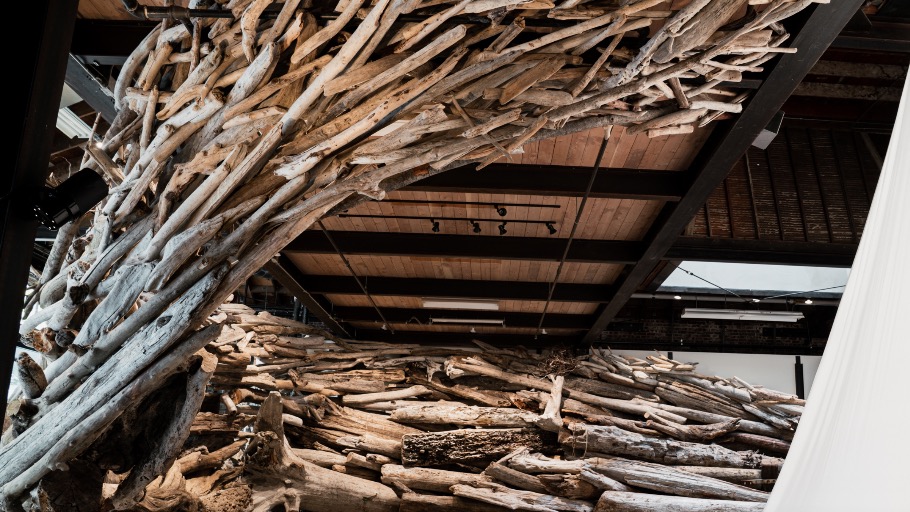
Title: SALVAGE
By: Rusandaguzun- Event Type:
- Art
- Location:
-
Mad Art Seattle
- Date And Time:
- Admission:
- Free
- Website (Optional):
- https://madartseattle.com/exhibitions/salvage/
Description:
Seattle-based artist Alison Stigora draws inspiration from materials in the natural world to create SALVAGE, a two-part, monumental sculptural installation at MadArt Studio. By combining reclaimed driftwood with light and sound compositions that reflect natural phenomena, Stigora invites visitors to engage their senses in a moment of respite. Upon entering the studio, viewers are met by a floor-to-ceiling curving wave constructed from pieces of discarded driftwood recently recovered from Puget Sound. The logs are weighty, some nearly the size of whole trees. They combine to form a mass that appears to be carried along a powerful current. This sculptural form acts as a spatial divider, concealing what lies audibly beyond the visual shield it creates. As visitors circumvent the wood barrier and move deeper into the space, they encounter a large, soft, translucent sculpture that glows with the colors of a warm sunrise. Built directly off of the studio’s architectural skylight and extending to the floor, this piece creates an inhabitable light well that subtly transitions through a luminous, colorful sequence. Both sculptural aspects include a unique audio composition made in collaboration with Rachael Fasano, an emerging Seattle-based composer. A low, resonant frequency plays an earth-bound track compiled from recordings of geologic activity and dredging equipment used in the retrieval of drift materials. This sound, which is felt more than it is heard, rumbles from seating built directly into the interior side of the driftwood sculpture. Emanating from the translucent light piece is a contrasting chorus of looping vocals and celestial sounds, which are paired alongside moments of stillness. The driftwood used to construct SALVAGE was graciously donated by the Army Corps of Engineers’ M/V Puget, a recovery vessel for retrieving dangerous debris from our region’s waterways. This mission becomes central to Stigora’s creative intentions. By offering space for contemplation and reflection, she hopes that SALVAGE will provide visitors with an opportunity for reflection, and to note what sorts of obstructions might exist on a personal or communal level. Akin to reshaping cast-off sources of detritus into something beautiful, Stigora poses the question: how can we embrace areas of resistance and positively see them as a space for transformation?